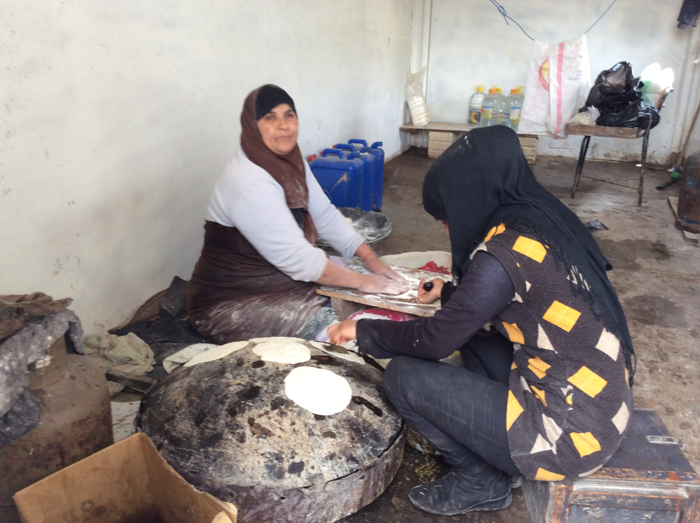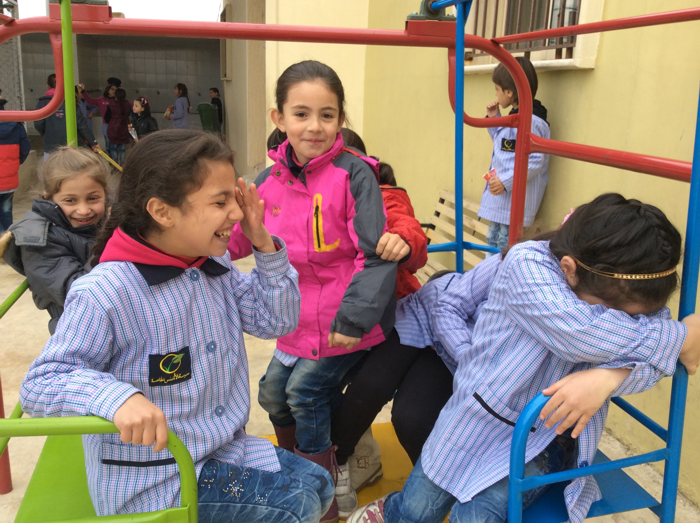
Fr Cedric Prakash, a senior human rights activist from Gujarat is now in Beirut, Lebanon, from where he will be contributing a regular column for SabrangIndia
Tasnim is just about seven years old. It’s been a year now that her parents Zemzoun and Mohammed fled with their five children (Tasnim, Ghofran, Rawan, Razan and Khaled) from war –ravaged Syria to the safer and more secure environment of neighbouring Lebanon. Tasnim does not remember very much about the day they had to leave the comfort of their small home just outside Damascus; ‘it was very painful and difficult’ she says and then just tunes off clearly trying to forget the way her family had to come away from the place they once called ‘home’ .
The reality of Tasnim –is easily the story of two million Syrian refugee children who today live in neighbouring countries. The Syrian conflict will soon enter its sixth year. In 2015, the number of refugees fleeing Syria surpassed 4 million and Lebanon became the country with the highest per capita concentration of refugees in the world.
At the end of November 2015, the number of UNHCR registered Syrian refugees in Lebanon was 1,070,189 while the exact number remains unknown: the reported number strictly reflects those registered with UNHCR. Lebanese authorities estimate the number of unregistered Syrian refugees to be as high as 500,000[1].
Children and youth figure prominently in the flow of Syrian refugees. Based on recently published figures by UNHCR on Lebanon, half of the total number is children below the age of eighteen; of these, there are more than 477,000 Syrian children who are school-aged [2]. As of October 2015, more than 70% of them were out of school.
The Government of Lebanon launched a strategy in 2014 for educating refugee children in the country: Reaching All Children with Education (RACE), which aligns the country’s refugee response with the Lebanese Government’s Education Sector Development Plan. RACE promises to provide access to formal education to a great number of Syrian refugee students. This program, even if implemented perfectly to plan, will reach less than half of the school-age Syrian children in Lebanon.
Another essential problem that RACE does not promise to solve is aligning Syrian refugee students’ educational capacities with the requirements of the Lebanese curriculum. Syrian children face significant language barriers in adapting to the Lebanese curriculum, which provides certain subjects in English and French. These obstacles, in addition to the lack of available spaces, transportation costs, discrimination and bullying, social and economic issues, as well as unpredictable enrolment regulations[3], are the entrenched barriers to Syrian children’s successful enrolment and attendance in both formal and non-formal education provided through public schools.
According to UNHCR, more than 67 percent of the Syrian refugees in Lebanon are living in the North and Bekaa regions due to their proximity to Syria. The ratio of Syrian refugees to Lebanese citizens in the Bekaa is now as high as 1:2. Unlike refugees living in the Beirut and Mount Lebanon governorates, a large proportion of refugee families in the Bekaa region are staying in makeshift camps, leaving them vulnerable to poor weather, hygiene and protection concerns.
Security incidents are more frequent in the region due to the proximity to the Syrian border, which presents additional challenges for humanitarian access and delivery of assistance to refugees living in the Bekaa.
Children are often forced to start working in order to help provide for their families, and usually take jobs or work daily/seasonally in the agricultural sector. Many of the children are exposed to pesticides, toxic chemicals, heavy loads and exhausting hours.[4]
According to a study conducted in 2014, over half of the Syrian children living in the Bekaa had only attained basic reading and writing skills or elementary education before starting work.[5] The Bekaa region has the highest number of out of school children (85%) in the country, largely due to the lack of proximity to schools.[6]

But Tasnim is one of the more fortunate refugee children of the Bekaa region as she studies today in the Al-Andalus school which is administered by the Jesuit Refugee Service (JRS) since October 2015. She is delighted about this. She enjoys learning and playing in school. She looks forward to the daily snacks and the other facilities given to her in school. She revels in the warmth, affection and acceptance lavished upon her by her teachers.
Tasnim sits on the front bench of her class. Some visitors come in. They ask those ‘normal’ questions which a little child is subjected to: “When you grow up, what would you like to become?” Answers are the usual ones which a child would give perhaps anywhere in the world:” policeman’, ‘teacher’, ‘cook’ etc.
The question is directed to Tasnim, in an answer which belies her seven years and surprises everyone she looks at the visitor, with her arms folded she coyly says “Doctor!”. Later on, she is asked the ‘why’ of her desire. She does not hesitate in saying ‘I want to heal others; I don’t like seeing people dying, killing one another.
She also shares her longing to go back home to Damascus. She remembers her grandfather with a glisten in her innocent eyes. She loves him very much and she enjoyed playing in his house; besides, she says her grandfather used to play with her too. Then one day he became very sad, she says, because his son (her Uncle) was killed. She began feeling very sad too because he was sad. She misses her grandfather very much and wishes that he would come and live with them in Lebanon.
In the Bekaa valley there are thousands of refugee children who have to labour in muddy fields picking up fruits or vegetables or just doing almost anything to eke out an existence. A few months ago the New York Times (November 5, 2015) carried an insightful story entitled ‘The Displaced: Hana’.
This is the story of Hana Abdullah, another Syrian refugee child in the Bekaa valley a little older than Tasnim. But Hana is not as fortunate as Tasnim –as she slogs for long hours to help her family survive.
Though Tasnim is in school and is cared for, her father Mohammed finds it really difficult to make both ends meet. By profession he is a carpenter; back home in Syria he earned a decent wage and was able to provide his family with a comfortable life. The past five years have meant a dramatic change in his fortunes. He had no alternative but to flee with his family to Lebanon. He desperately tries to make both ends meet by doing odd jobs- that does not happen daily. No one speaks about a ‘just wage’ for a refugee. His wife Zemzoum looks after the children and the handles other household chores
Does she understand the meaning of her words, her wish, her dream? This is anybody’s guess.
Though she is just a little child today, her song is not “Que sera? Sera?” (Whatever will be, will be….) She has no doubts when asked what she wants to be. A doctor! The odds are however heavily stacked against Tasnim and her dream.
Is the World listening?
(The writer is a human rights activist. He is currently based in Beirut, Lebanon as the Advocacy and Communications Officer of the Jesuit Refugee Service(JRS) in the Middle East and North Africa Region)